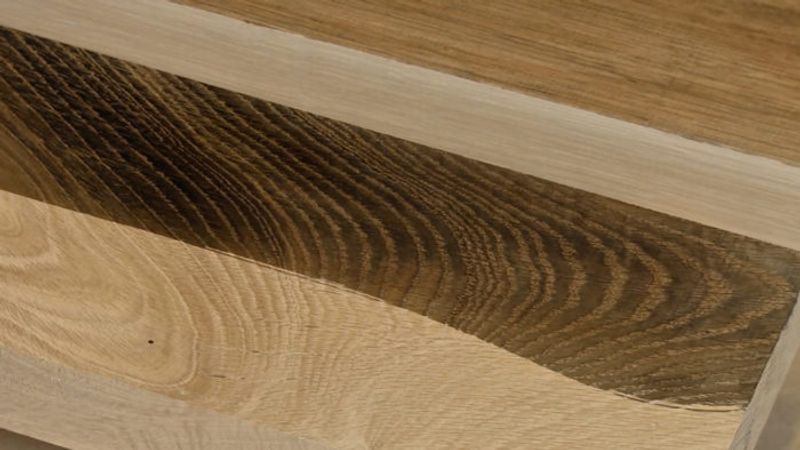Video: Ebonizing Oak with Steel Wool and Vinegar
Create a dark, graphic look that emphasizes the form of a piece.

Ebonizing wood is a wonderful way to create a dark, graphic look that emphasizes the form of a piece. The steel wool and vinegar recipe I use gives depth and darkness to heavy-tannin woods like walnut and oak, while still allowing aspects of the grain to shine through. Since this is a reactive finish, it penetrates deeper into the wood than a stain or dye that sits on top, creating a natural, durable black tone. The ingredients cost very little and can be bought at any hardware and grocery store. You can easily experiment and develop a recipe that’s right for you.
See Michael’s article in FWW #275-May/June 2019 Issue to see how he creates his solution.
 Check out part 2 of this 2-part series to see the effects of steel
Check out part 2 of this 2-part series to see the effects of steel
wool and vinegar on tannin-light woods such as maple and cherry.
More on FineWoodworking.com:
- An Exploration in Finishing – A modern take on jin-di-sugi and ebonizing by Kevin Rodel, Anissa Kapsales #196–Jan/Feb 2008 Issue
- All About Dyes and Stains by William Duckworth
- Should Woodworkers Say Goodbye to Ebony?







Comments
Apparently this process seems a bit tedious without producing predictable consistency. I found using India Ink produces a more consistent and durable finish right out of the bottle without messing with cleaning steel wool and having to wait a week or so for the solution to develop. The presenter Michael Robbins made a very boring presentation, difficult to watch.
It is easier to get consistent results by using bark tea instead of dark tea. Make up a solution by brewing a couple of pieces of oak bark. Use that solution to rise the grain and saturate the board you are ebonizing before applying the steel wool and vinegar recipe. The result will be deep black. You will end up with a bluish cast, the bluish cast can be removed by applying another round with bark tea.
Keep the Michael Robbins videos coming. This isn’t the same process I follow, but if this process is good enough for Michael Robbins, it’s worth knowing. Like the other reader, I’ve found pretty good results presoaking with Bark Powder, but I’m interested in integrating the hand soap into my process.
In regards to one of the other comments: India Ink is staining, not ebonizing. I’ll concede india ink is easier, but it’s actually less durable and the final product looks more artificial.
Do you do a top coat over the ebony?
Log in or create an account to post a comment.
Sign up Log in